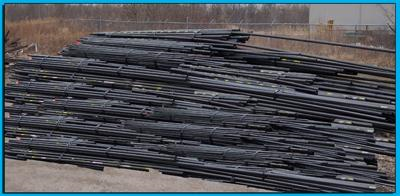In a tube mill, production scrap can come from just about anywhere: tooling wear, bad material inputs, out-of-maintenance equipment or a process that is out of control. Regardless of where it comes from, the creation of scrap costs tube fabricators a lot of money and time. Since raw material accounts for the majority of the cost to make a tube, reducing the scrap rate by even a fraction of 1% can provide substantial savings to the tube fabricator.

Typical Scrap Generated from a Tube Mill
(photo courtesy of www.roll-kraft.com)
Traditionally, defects are found on a tube mill at the end of the production line by existing NDT equipment or alert operators. By placing an automatic weld inspection system right after the weld box, defects or weld zone variations can be detected earlier in the production process and can be removed from production prior to further value being added to defective products. By detecting the defects automatically right after the weld box and not manually by an operator or inspector at the end of the line after cutting or bundling, a complete length of tube can be saved by responding faster to the out-of-control process.
The result is material savings of scrap tube because the process can be brought in control sooner, avoiding producing extra lengths of defective tube.
Want to reduce scrap in your mill? Justify an automatic weld inspection system using a ROI worksheet where you can enter your own mill data. Click here to download your FREE ROI Calculator!
Interested in learning more about defect detection on welded tube and pipe? Take a look at some of our other blog articles:
1. Detecting Welded Tube Defects with Xiris: Critical Defects
2. Inspecting Needle Tubes for Weld Defects
3. Detecting Hairlike Scratches on Coated Tubing
For more information on how Xiris Weld Cameras can help monitor your weld processes, visit Xiris.com or sign up to receive the Weld Video of the Month



.png)


